Experience a slice of luxury at this 300-year-old Portuguese mansion turned boutique hotel in Goa
YS Life visited MansionHaus, a 300-year-old heritage home in Goa’s Anjuna district that has been restored into a luxury boutique stay by property developers and sisters Kezya de Braganca and Kathya de Braganca, Directors at Riviera Group.
Sun and sand, alcohol and parties have been the quintessential elements of any Goa trip. While that hasn’t changed, the state has definitely added many more feathers to its cap. Today, Goa prides on having an unrivalled food and beverage scene, with innovation at its centre. With an increasing influx of well-travelled folks coming to holiday here, restaurants and bars are constantly challenging themselves to come up with new concepts.
Similarly, hospitality has also assumed a new flavour. A barrage of luxury properties have opened up in Goa, offering experiences like never before. Amid the clutter stands MansionHaus, a 300-year-old heritage property turned boutique hotel in Goa’s bustling Anjuna district that strikes a balance between tradition and modernity. Once the private residence of Antonio Souza and his wife, Marie Antoinette, MansionHaus was restored after their passing by property developers and sisters Kezya de Braganca and Kathya de Braganca, Directors at Riviera Group.
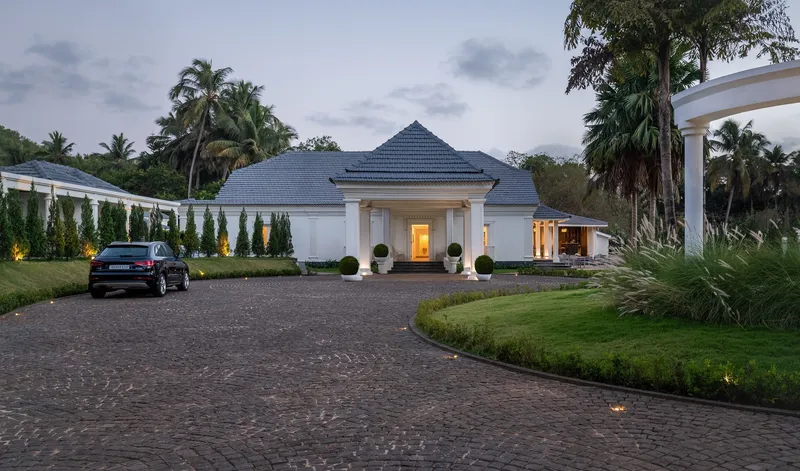
Its timeless architecture and neo-classical interiors and the curated gastronomic journeys will take you back to the era bygone. Interestingly, the property offers a slice of history while providing all the comforts of a luxury hotel. All in all, MansionHaus is the ideal choice for the discerning traveller who is looking to enjoy privacy and comfort in a home enriched by a wealth of history, art and culture.
YS Life visited the property to dive deeper into its story.
Awe-inspiring architecture
MansionHaus’s architecture instantly strikes you when you first enter its precincts. From the askew roof to unplumbed walls, irregular cut mother-of-pearl shells, patchy lime plastering, and more, Kezya de Braganca has left some of its imperfections untouched to lend the property a distinct character.
The property was home to Kezya de Braganca’s paternal grand agnate Marie Antoinette. Today, the Salon Privé, previously a ‘sala’ (a room for entertaining visitors), has been named after her and the property layout has been retained to exemplify how these spaces interacted for centuries.
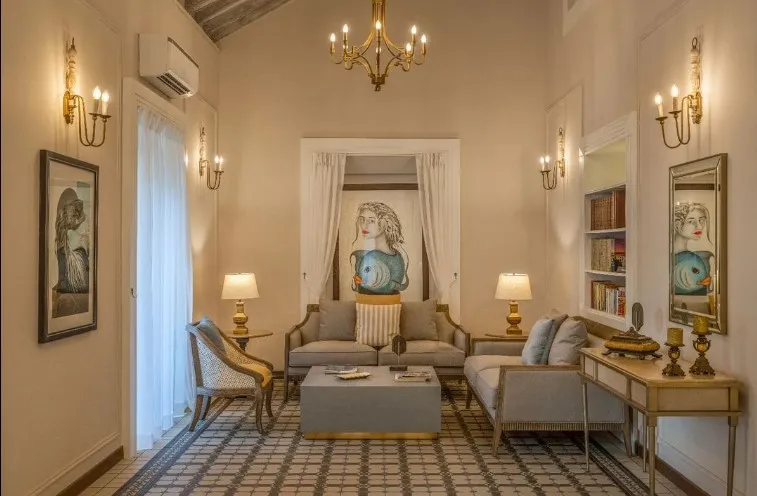
Source: Instagram
“In restoring the iconic structure, the complex, multi-layered evolution of architecture in Goa and the intricate cultural expressions of Goa have been kept as the leitmotif,” says Kezya de Braganca.
Further, she explains how the facades of traditional Goan homes were typically painted in vibrant hues of yellow, bright blue, peach, or similar colours, which were derived from vegetables and natural dyes. MansionHaus, on the other hand, captivates you at the first glance with its camphor white facade.
Other striking elements include the driveway, Balcao (a typical Goan verandah that has seats or beaches extended on to its sides), and a porch that are characteristic of Goan-inspired homes. The ornate columns and architraves take inspiration from Baroque, Italian and Portuguese styles.
Portuguese-style living
MansionHaus has nine suites that either have pool access, a private pool, or a jacuzzi. I stayed in a space that offered direct access to the pool–what bliss! I made use of every opportunity to step into the azure blue waters lined with sun loungers. Whether it was to read a book, have a cuppa (or a drink), or enjoy a floating breakfast–I did it all.
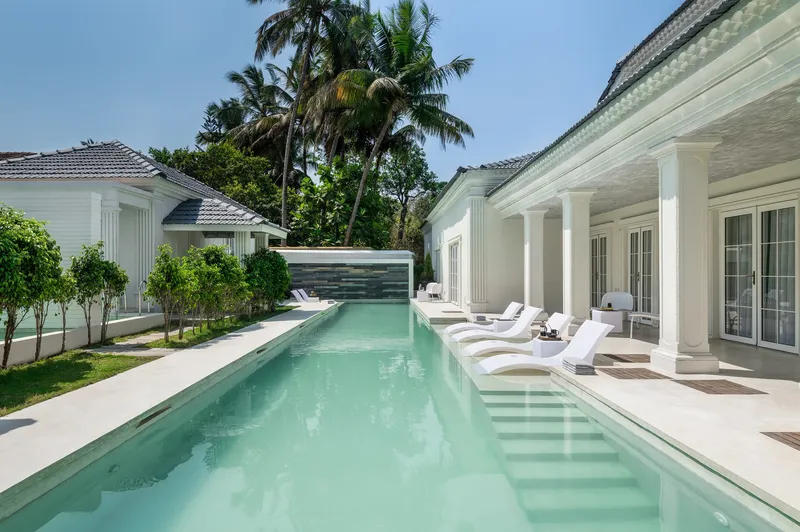
Moving on to the interiors, they have been fashioned with weathered wood, porcelain floors, polished marble, distressed surfaces, and muted fabrics accented by eclectic art on rotation from local artists. Attention to detail is everything for me, which is why I was mighty impressed with everything they had put together.
On being asked the philosophy behind Kezya de Braganca’s restoration project, she says, “Restraint is an important part of my aesthetic profile. Emphasised horizontal and vertical lines, symmetric layouts, simplicity of geometric forms, classical architectural details like dramatic use of columns and high vaulted ceilings, spacious layouts with interiors leaning towards thoughtful modern minimalism.”
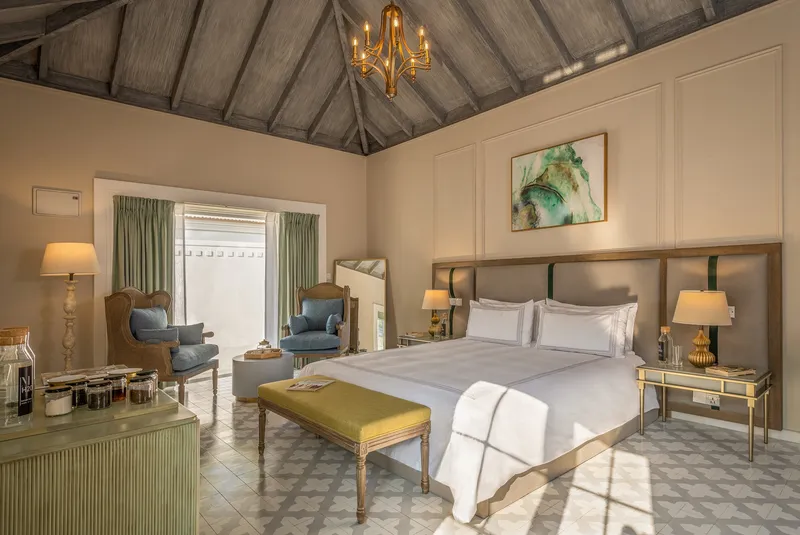
“In fact, some spaces have even been deliberately left blank. Neutral hues boldly contrasted with metallic accents and eclectic art would come together to create a very distinct visual identity,” she adds.
Sustainable luxury
In their commitment to be as sustainable as possible, the wood of a 100-year-old ship marooned on the coast of the Arabian Sea has been repurposed to create the Summer Room. It is an airy, bright communal alfresco space–the centrepiece of MansionHaus–surrounded by beautiful arches and pillars where the dining and conversations happen every evening.
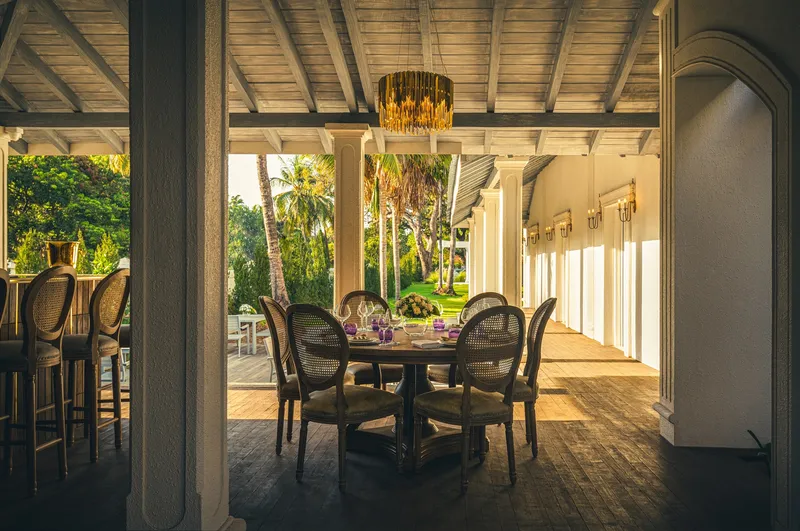
A similar philosophy also extends to their curated gastronomic offerings. All fruits and vegetables used at the MansionHaus kitchen are organic and sourced locally. The in-room minibars are stocked with locally produced superfoods, preservative free health snacks, and pre/pro-biotic Haus-made drinks.
The Angler, an experiential bar and bistro, serves as an energy centre for the mansion, offering brasserie style dining, taking guests from coffee to cocktails over the course of a typical day. Other culinary offerings include an in-house culinary lab, Cozinha, which features chefs’ tables by both local and international food artisans.
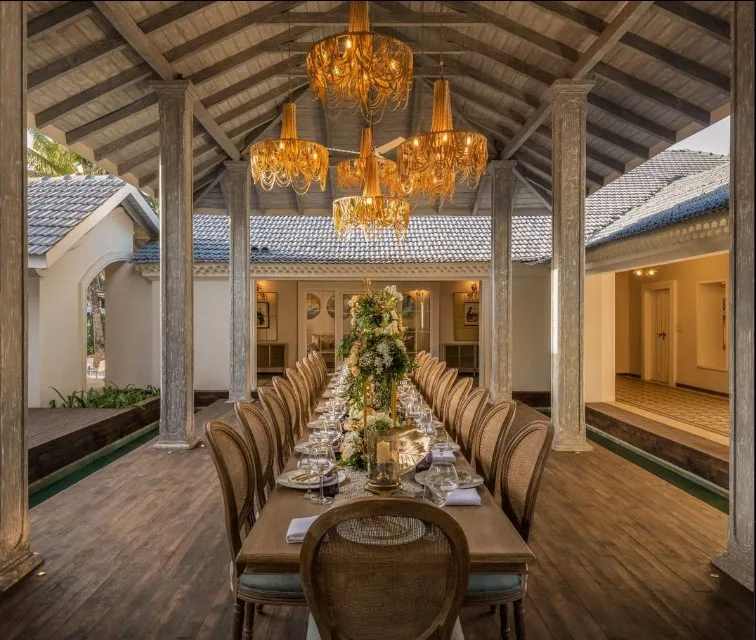
Source: Instagram
Kezya de Braganca shares her thoughts, “We have minimised waste in every possible way. We operate without a back of house and offer experiences of multiple restaurants in a single F&B space. Our kitchen is actually a front of house space, we have eliminated the need for a check in desk. Guests can proceed straight to their suite and are welcomed by a friendly face and a complimentary bar–all just like it would if they were going home.”
All in all, if you’re in Goa and want to experience Portuguese luxury living with a conscience, you know where to head!
Accommodation starts at Rs 12,000 and goes upwards for double occupancy.
Edited by Megha Reddy







